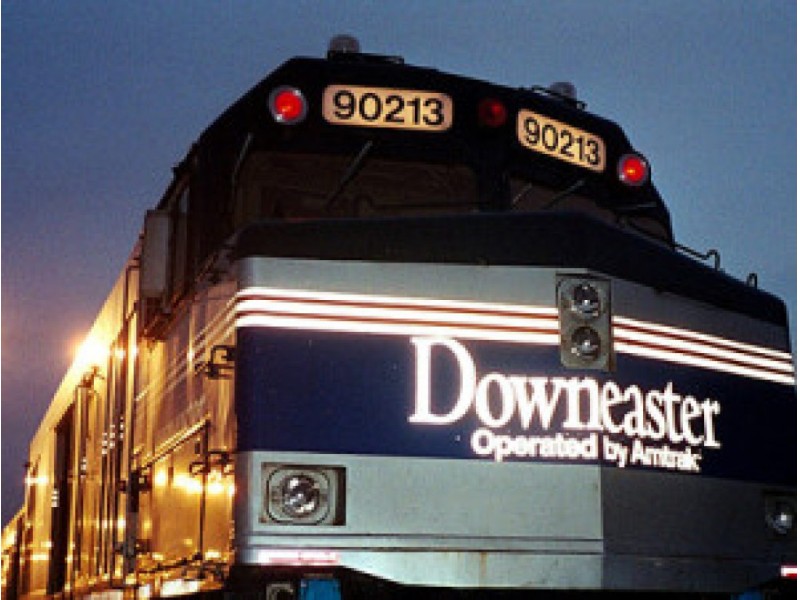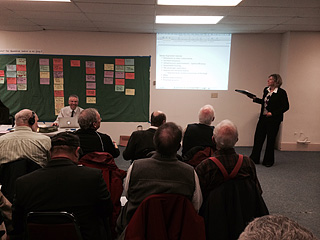Strangely enough, while perusing the NNEPRA web site yesterday, an article they had posted led us to this item, whose source URL is: http://patch.com/new-hampshire/concord-nh/an--passenger-rail-overpriced-underutilized
We won’t vouch for the numbers presented or anything else. We simply think inquiring minds and the intellectually curious will find the material informative. In particular, you should notice many of the same symptoms, talking points, platitudes, pathologies, etc, that apply to our own circumstances here in Brunswick as they derive from AAB and NNEPRA activities. Not to mention glowing consultant projections of economic growth beyond imagining. If you’re into projections, instead of reality, you’ll probably enjoy this: http://www.nhrta.org/fullpanel/uploads/files/02.03.15-capitol-corridor-results-final2.pdf
We find it amusing that the three states mentioned….Vermont, New Hampshire, and Maine….really are Northern New England.
Pay particular attention to the “Champlain Flyer” material.
Here’s another item by the same author: http://patch.com/new-hampshire/concord-nh/bp--connecting-the-rail-funding-dots
Be sure to read the comments attached to each column.
And if you’re the type who likes to look at ‘audits,’ you might enjoy this one; it’s very illuminating, in our view. http://www.leg.state.vt.us/jfo/reports/Flyer%20Report%2002-2003.pdf
It might serve as a guide for OPEGA work on the NNEPRA investigation. It shouldn’t take you long to go through it, and Side strongly encourages you to do so. A little reality can’t hurt once in a while; it’s a good antidote to irrational exuberance fever.
(PS: Ed note – Lest you think Mr. Lemieux, author of the article below, is a “Mr. Grumpy,” as a ‘certain’ town councilor calls your correspondent, he is not. We just learned he’s a member of the Concord, NH Transportation Policy Advisory Committee (TPAC), so he has actual credentials on the subject. http://www.concordnh.gov/index.aspx?NID=278)
====================================================================
By Dick Lemieux; January 29, 2013

Train advocates in New Hampshire often cite Maine's Downeaster as an example of a successful train. It is not. It is an economic and transportation disaster.
The Downeaster consumes $7 million per year in taxpayer subsidies. In exchange, it attracts a minuscule market share in the corridor where it competes for passengers.
Since 2001, the Downeaster has been subsidized by the Federal highway gas tax, supplemented by a state tax that is levied on rental cars. If not for a Maine-only statutory exception that has allowed Maine to continue to use Federal funds longer than other states, both the subsidy and the Downeaster would have ended years ago.
The Downeaster is not sustainable. It cannot attract enough passengers willing to pay anywhere near the cost of providing the service. Downeaster fares are priced at a 50 percent discount on its real operating cost. Still, the train only attracts about 740 round trip passengers per day out of the hundreds of thousands of people who live and travel in the Downeaster's service area. It has not relieved highway congestion in any noticeable way.
One might expect that Maine would be looking for ways to put the Downeaster on a path to financial sustainability. Instead, last year Maine spent $38.3 million Federal tax dollars to push Downeaster service 30 miles further into sparsely populated areas. The expansion is expected to attract fewer than 50 new round trip passengers per day. Operation of the extension is sure to result in higher annual deficits, which will worsen the Downeaster's already bad cost and service metrics.
A second nearby example, not so often cited by rail proponents (for reasons that will become obvious), adds to our understanding of the economic, environmental and energy realities of passenger rail in rural states.
Between December 2000 and February 2003, Vermont’s "Champlain Flyer" ran an average of 7.5 round trip trains a day 13 miles each way, between Charlotte and Burlington. All decisions to proceed with the project were based on predictions and estimates that should have led to the opposite decision: Do Not Proceed. In approving a multimillion-dollar project that clearly offered no offsetting benefits, Vermont and Federal agencies gave us a documented model of bad decision-making that led up to a train that should never have left the gate. Vermont's final decision to proceed with the Flyer was based on the results of a "Major Investment Study" (MIS), like the one now being proposed in NH for the "Capitol Corridor" commuter rail project.
The Champlain Flyer cost $19,112,317 to build - 147 percent over budget. It cost an average of $2,526,943 per year to operate - 177 percent over budget. It carried about 230 one-way passengers a day - 61 percent less than predicted, and it took in an average of $37,734 a year in ticket sales - 74 percent less than predicted. The average train carried 15.2 passengers - the capacity of a passenger van. The fare, after a four-month long free trial, was $1 - 3 percent of the $32.82 per passenger cost to operate the train. Even at a 97 percent discount, the equivalent of one in 1,275 Chittenden County residents chose to take a round trip on the train on a daily basis. State officials not only underestimated their costs, they also overestimated their market.
As a result, the train lost a lot of money. While the project was supposed to reduce congestion on nearby Route 7, save gas and reduce air pollution, it did none of those things. To the contrary, a postmortem audit of the Champlain Flyer, ordered by the Vermont Legislature, revealed the following:
- Congestion. The train shaved an imperceptible 3 seconds off the 15 minute trip on Route 7. Vehicle miles traveled on Route 7 were reduced by about one quarter of one percent.
- Fuel use. During the 27 months it was in service, the Champlain Flyer resulted in a savings of 118,634 gallons of gasoline, due to the cars that would have been on the road had the service not been operating. During the same time, the train consumed 277,943 gallons of diesel fuel. In other words, it burned 2.34 gallons of diesel fuel for each gallon of gas it saved. The cost of the diesel fuel was largely borne by taxpayers who didn't ride the train, while the gas that would have been bought by drivers would have generated $45,555 in state and Federal gas tax revenue.
- Air pollution. On an annualized basis, the Flyer was responsible for a net reduction of 21 tons of carbon monoxide (CO) emissions. That's the good news. The bad news is that it also resulted in a net increase of 49.5 tons of nitrogen oxides (NOx) and a net increase of 781 tons of carbon dioxide (CO2), a greenhouse gas. Region wide, the train was responsible for a 0.5 percent increase in air pollution and a 0.09 percent increase in greenhouse gases. The real air quality benefits of this project were realized when it ended. Vermont should have gotten some kind of air quality improvement award for returning passengers to their cleaner, more fuel-efficient cars!
- Economic Growth. The auditor's report is silent on how much economic growth resulted from the state's "investment" in the Flyer. Maybe that was the big undocumented payoff. Maybe The Train That Gobbled Up Money By The Caboose-Load sparked multiple millions of dollars worth of new development. Maybe. If so, the auditors forgot to mention it.
In January 2003, Vermont's Secretary of Transportation said on Vermont Public Radio, "It's cost the Flyer $150,000 a month to run and we have expended our federal dollars and now we are looking at state dollars to continue the Flyer....” After little more than two years of operation, Federal funds ran out. Predictably, the Champlain Flyer was shut down the following month. Only through the involuntary good graces of highway taxpayers was it able to survive as long as it did.
In 27 months, The Little Train That Couldn't spent $265 for every dollar it took in, it burned up 159,309 gallons more fuel than it saved and added a net of 1,868 tons of pollutants to Vermont's air, all while making an insignificant difference in congestion.
Could this calamity have been predicted? Yes. In fact, it was. But, the handwriting on the wall was ignored.
In 1993, when VT was where NH is now, rail advocates and their consultants were predicting the train could be built for $8.8 million and operated at a net loss of between $835 and $875 thousand a year with an estimated 460 to 978 passengers a day. That was a plan that predicted losing money forever.
Unswayed by those dire predictions, the state rehired the same transit consultant, who came back in 1995 with a modified plan to build the train for a million dollars less than their initial estimate, expand the recommended service from 750 to 5,110 round trip trains (not passengers) per year, lower the fare from $1.25 to one dollar, reduce revenues by almost 50 percent and, magically, only increase annual operating losses by 10 percent from their earlier estimate.
Predicting an annual operating deficit between $834 and $995 thousand, this plan too was a recipe for fiscal disaster. Even if they had not exceeded their cost estimates and even if they had not overestimated revenue, on its face it was still a bad plan.
Nobody pulled the wool over their eyes. Yet Vermont officials, eager to have their train, proceeded with the project as if they didn't believe the dire predictions they had paid for. Vermont’s Governor told reporters, "This is the beginning, I hope, of a real renaissance in rail."
What could they have been thinking?
Twenty years later, NH is now where VT was in 1993: that is, staring at the first forecast of doom and deciding whether or not it would be smart to spend more money on another study that would, at best, forecast lesser doom.
The most recent consultant study estimated the Capital Corridor train would cost taxpayers $300 million to build and $4.6 million a year (initially), over and above expected revenue, to operate. If history is a guide, those numbers are optimistically low. Yet, they still predict financial disaster.
The objective of the project is to provide a "transportation choice" to a predicted 600 commuters a day, going to their higher paying out-of-state jobs. Shifting those 600 commuters from buses and cars to trains will, the wishful thinking goes, reduce congestion, save gas, reduce emissions, stimulate economic growth (that far exceeds the enormous investment), create hundreds of jobs (without eliminating any) and bring about general euphoria.
How many more failed expensive experiments will it take before public officials wake up to the fact that passenger rail in rural states is a colossal money pit? Time after time, states fall for proponents’ sales pitch that trains are a more efficient way of moving people than roads and, time after time, the transportation marketplace proves them wrong.
Hope springs eternal. Maybe, as the wishful thinking continues, if we spend enough money on enough consultant studies, we can come up with more favorable (if not more believable) estimates of cost and ridership, in spite the odds against it. And, if not? Well…. So what! We can't be left in the dust. We have to keep up with our neighbors in Maine and Vermont or everybody will think we're hicks!
Seduced by the thought of free Federal money but armed with the knowledge of two colossal failures, one on either side of us, and certain massive subsidies to follow, how will the Executive Council vote on the pending proposal to enter into another expensive rail feasibility study? Odds are such a study would only yield projections they will have to ignore anyway (like Vermont did) to get to proponents’ objective of restoring passenger rail in NH. Judging by past experience, odds of a positive return on investment are better with Megabucks. Will the governor and Executive Council be willing to gamble $1.9 million on another sure failure?
What are they thinking?
=============================================================
Provocative, don’t you think? We wonder what All Aboard New Hampshire and All Aboard Vermont, not to mention All Aboard Champlain, have to say about the articles, audits, and such.
They must have pooches of their own, though we’re not sure what breeds they might be.
Not to mention other members of the animal set.



















